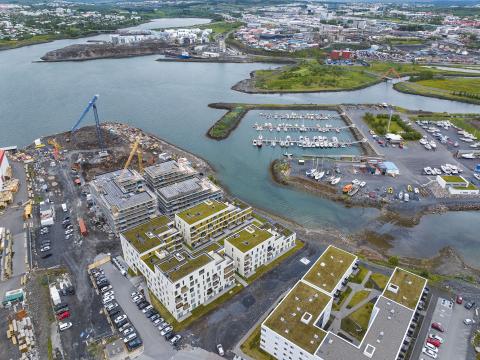
The current municipal plans for the capital area include developing almost 60,000 apartments. For comparison, there are currently about 98,000 completed apartments. This information comes from the new development plan for the capital area.
A key element in implementing the capital area's regional plan for 2015-2040 is creating four-year development plans. These aim to coordinate municipal housing and transport plans and share information about development plans with the public. The new development plan is the third based on the Capital Area's Regional Plan: Capital Area 2040. It shows ample planning permissions for increased development in the capital area. Approved land-use plans exist for over 12,000 apartments, with plans for over 11,000 more in progress. This allows for more construction than the recent annual average, considering planning permissions. It's possible to start building an average of nearly 3,400 apartments annually for the next four years, given available financing, workforce, and equipment.
The plans could house up to 142,000 additional residents
The capital area's population is expected to grow by 6,000 to 16,000 by 2027. Municipal plans for housing development include over 12,000 new apartments, potentially housing up to 30,000 residents, based on the current average of 2.46 people per apartment in the capital area. The total planning permissions in municipal plans could house up to 142,000 additional people, with plans for 57,700 apartments. This doesn't include apartments already under construction. Municipal plans have varying timelines, with Reykjavík and Kópavogur the longest and extending to 2040.
Expanding transport and development corridors is a key task
70% of building rights for apartments with approved land-use plans have been allocated, equaling about 8,500 apartments. Of the 12,000 apartments with approved land-use plans, nearly 6,300 are on buildable lots with completed street works. The non-profit housing development plan aims to bring 250-450 completed apartments to market annually in the capital area from 2024-2027.
All planned development is within the capital area's current growth boundaries. 71% of planned development is within the CityLine's impact area on transport and development corridors as defined in the capital area's regional plan. 54% of future residential development areas are within the transport and development corridors' impact area. The task for coming years is to expand these corridors to cover a larger portion of future areas.
- Capital Area Development Plan 2024.
- The numerical data doesn't include housing already under construction. This information is available on the Housing and Construction Authority website.
- Key figures from the development plan are presented in an accessible format in a new web viewer.